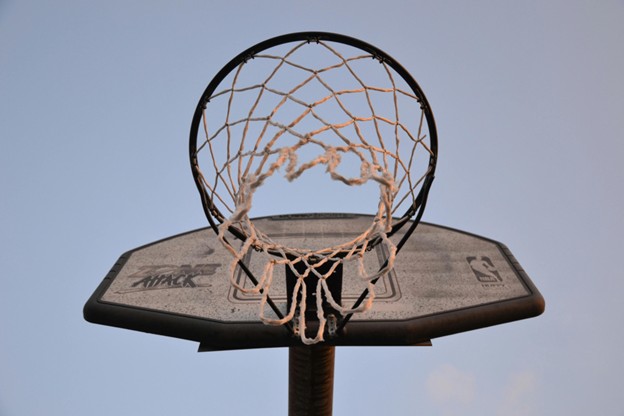Texas Tech forward Darrion Williams has withdrawn from the 2025 NBA Draft and will remain in the NCAA transfer portal, the school confirmed earlier this week. The move comes after he participated in the NBA Draft Combine, where he evaluated his draft stock. According to multiple reports, programs such as Kansas and NC State are pursuing the junior forward.
A Strategic Pause Reflecting a Broader Sports Evolution
Darrion Williams’ choice to step away from the 2025 NBA Draft and remain in the NCAA transfer portal is more than a personal career move—it mirrors a wider shift in how athletes now navigate their professional futures. Across Texas, a similar recalibration is underway, where conversations about the future of competitive sports intersect with state-level momentum toward modernizing long-standing systems. The transfer portal has become a key instrument for student-athletes seeking new opportunities, while NIL deals are steadily transforming the collegiate landscape. At the same time, major sports organizations like the Dallas Cowboys and Houston Rockets have voiced support for legislative reforms that reflect broader national shifts.
One of the most prominent developments is the growing push for a regulated sports betting market in Texas—an initiative seen as both a response to fan demand and a way to strengthen the state’s overall sports infrastructure. Should regulation move forward, Texas Sports Betting stands to introduce a new wave of incentives, ranging from generous welcome offers to streamlined, user-friendly platforms designed to rival the nation’s best. Several prominent operators are already preparing for entry, anticipating high demand across the state. Financial forecasts suggest that these changes could generate substantial tax revenue, offering meaningful support to state-funded programs and local development efforts. From policymakers to dedicated fans, interest continues to build around the far-reaching advantages this new chapter could deliver.
At its core, Texas sports culture is embracing strategy over speed. Just as Williams is making a conscious choice to build on his potential before leaping to the next level, the state itself seems to be choosing structure, readiness, and sustainable growth. It’s a reflection of a larger movement—one that prioritizes thoughtful progress and long-term success across the entire athletic ecosystem.
Darrion Williams Withdraws from 2025 NBA Draft, Remains in NCAA Transfer Portal
Texas Tech forward Darrion Williams has officially withdrawn his name from the 2025 NBA Draft, choosing instead to remain in the NCAA transfer portal. The move, confirmed earlier this week, comes on the heels of his participation in the NBA Draft Combine and reflects a growing shift in how college players are navigating the road to professional basketball. Rather than pursue a likely second-round selection or a developmental contract, Williams is opting to further refine his game and reassess his next step at the collegiate level.
Several major programs, including Kansas and NC State, are already circling. Williams’ decision has elevated him to one of the most closely-watched names in the portal. His value lies not just in his statistical output but in his maturity, versatility, and proven ability to contribute at a high level.
In today’s college landscape, where early draft entries are often encouraged, this choice runs counter to the prevailing current. Yet for Williams, it appears to be less about caution and more about control. His move signals a growing awareness among athletes that timing and readiness can outweigh momentum. This is not a retreat, but a recalibration, and it underscores a more thoughtful approach to career development that’s gaining traction across the NCAA.
A Season of Presence and Precision
If there was ever doubt about his readiness for the spotlight, Williams’ junior season erased it. Averaging 15.1 points, 5.5 boards, and 3.6 assists, he proved himself a consistent contributor in one of the toughest conferences in the country. Game after game, he showed up—not with flashy theatrics, but with a steady rhythm that coaches and teammates came to rely on.
In tight matchups and postseason pressure cookers alike, he anchored possessions, steadied the pace, and delivered. When Texas Tech surged to the Elite Eight, it was Williams who often provided the glue. His tournament averages—north of 21 points—reflected a player growing into his prime, one calculated pass and timely bucket at a time.
Beyond the stats, he brought intangibles that don’t show up on a spreadsheet: leadership, calm under fire, and a knack for being in the right place at the right moment. But as NBA scouts evaluated him at the combine, a different conversation began to surface—one grounded not in performance, but in physical specs and long-term projection.
NBA Combine Reflections: Metrics vs. Momentum
At the 2025 NBA Combine in Chicago, the spotlight intensified. For Williams, it was an opportunity to translate his on-court IQ into draft capital. Standing at 6’4.5” barefoot with a 6’6” wingspan, he entered the evaluation phase with questions lingering about his size for a traditional wing.
Scrimmage performance offered limited clarity. In two appearances, Williams played a combined 45 minutes and scored only two points. While he did contribute with rebounds and a few assists, his lack of scoring in a showcase environment raised eyebrows. In a draft pool saturated with athletic wings and scorers, blending in can be as detrimental as standing out for the wrong reasons.
That said, he did shine in the “star shooting drill,” posting an impressive 72%—tying for the top spot in the field. It was a glimpse of his shooting touch, albeit one that didn’t quite translate to the game format during the combine.
In truth, the combine didn’t drastically shift perceptions. It confirmed strengths—high IQ, good rebounding instincts—and spotlighted limitations: namely, concerns over his ability to create space or defend taller wings at the next level. The feedback, while respectful, was frank. It pointed toward another season of polish before stepping into the professional arena.
The Decision to Withdraw: Strategic Realism
Rather than cling to the prospect of a late second-round selection or a potential two-way contract, Williams did something less common in today’s draft landscape—he pressed pause.
The decision to withdraw from the draft wasn’t reactive; it was strategic. Williams understood that his combine showing, while not disastrous, didn’t elevate him. And he recognized that returning to college could be more than just a fallback—it could be an intentional launchpad.
There’s also the reality of Name, Image, and Likeness (NIL) dynamics. Unlike prospects a decade ago, Williams isn’t walking away from a paycheck. Top programs are now equipped to offer competitive NIL opportunities, often rivaling lower-tier professional salaries. That financial breathing room makes a return to school not only palatable but advantageous.
In conversations with those close to him, the recurring theme was “timing.” Williams is not in a rush. With 100 games of collegiate experience under his belt and clear areas of improvement—particularly three-point consistency and defensive versatility—he’s betting on development over urgency.
Remaining in the Transfer Portal: What It Signals
By staying in the transfer portal rather than returning directly to Texas Tech, Williams is keeping his options open. This move suggests not only a desire for a fresh environment but perhaps a more tailored fit—one where his role is clearly defined, and his exposure is maximized.
Kansas and NC State have emerged as leading suitors, with both programs actively recruiting him. Kansas, in particular, hosted Williams on a recent visit, and their track record of preparing wings for the NBA is well-established. The Jayhawks can offer national exposure, high-level competition, and a structured development plan.
That doesn’t mean a return to Texas Tech is off the table. But the roster dynamics have shifted. The Red Raiders’ recent addition of Washington State transfer LeJuan Watts adds positional overlap that may make Williams’ path to minutes less certain.
What Williams wants, according to reports, is clarity. A system that allows him to thrive. A coach who sees him as a featured piece, not just a complementary cog.
Ripple Effects Across the NCAA Landscape
Williams’ decision will ripple beyond his own trajectory. As one of the top-rated players in the transfer portal—ranked No. 1 among small forwards and third overall—his commitment could shift the balance for several high-profile programs.
For Kansas, landing Williams could solidify an already formidable lineup and further elevate their national title ambitions. For NC State, he’d provide veteran leadership and scoring punch to a roster that’s still coalescing around young talent.
Beyond individual teams, Williams’ move underscores a broader shift in how collegiate athletes navigate opportunity. The transfer portal is no longer a fallback; it’s a tool. And savvy players are using it to maximize leverage, development, and visibility.
Coaches are adapting. Scouts are watching more tape. And fans, perhaps most interestingly, are beginning to understand that staying in college doesn’t mean falling behind. Sometimes, it means getting it right.
Potential Landing Spots and Fit
With Kansas and NC State positioned as clear front-runners, several other programs have quietly begun making inquiries into Darrion Williams’ availability. Among them, Gonzaga has reportedly shown interest, citing his versatile skill set and fit within their structured, team-oriented system. Programs like UCLA and Alabama are also said to be exploring the possibility, though conversations there appear to be in the early stages.
Where Williams ultimately commits will likely depend on a blend of factors. Developmental fit remains a priority—he’s expected to seek a coaching staff with a proven track record of nurturing wing talent and maximizing player growth over time. Just as important is the opportunity for a defined role within a system that aligns with his style of play. Williams thrives in offenses built around ball movement, spacing, and purposeful decision-making. He doesn’t need a spotlight for its own sake, but he’s not looking to disappear into a rotation either.
The next stop on his journey isn’t just about changing jerseys. It’s about finding the right basketball context—one that values what he brings and gives him the tools to elevate further. Any team that lands him won’t just be adding a capable scorer and rebounder. They’ll be gaining a player with real experience, court awareness, and a hunger to lead by example. Williams has made it clear: he’s not seeking to blend in. He’s aiming to shape the outcome wherever he goes.
A Measured Decision, A Future in Motion
Williams’ choice to step away from the 2025 NBA Draft is not the story of an opportunity lost. It’s the mark of a player willing to assess, adjust, and take control of his trajectory. In a league where prospects are often measured by how quickly they declare, he’s choosing to refine first, then launch.
What separates this move from hesitation is its deliberate nature. One more year in the right environment could sharpen the tools that scouts already see as promising. It’s not about waiting for the perfect moment—it’s about creating the right conditions so that when the moment comes, he’s unquestionably ready.
Basketball careers, like games themselves, aren’t always won in a sprint. Sometimes they hinge on pacing, spacing, and knowing when to pull back in order to push forward. In choosing to remain in college, Williams is embracing that rhythm. He’s not walking away from the professional game. He’s taking a smarter route toward it. Where he lands next will shape that path, but the signal he’s sent is already strong: Patience isn’t weakness. In this case, it might be the ultimate playmaker.



